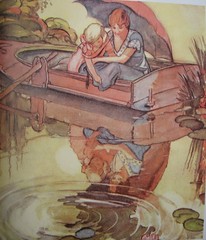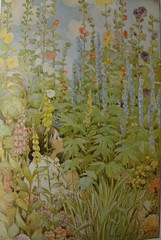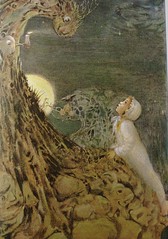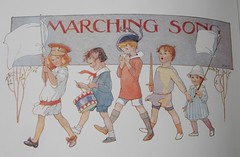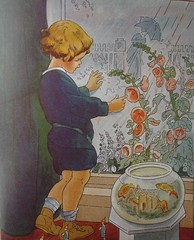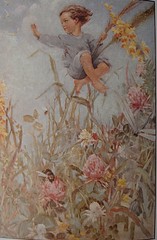It's interesting how different these three interpretations are of "Here We Go Round the Mulberry Bush."
Above, Henriette Willebeek Le Mair from Our Old Nursery Rhymes, 1911. Le Mair, a native of Holland, was strongly influenced by French illustrator Maurice Boutet de Monvel. Her children are pastel, delicate -- they have a certain formality about them.
Jessie Wilcox Smith's children are bright and lively. You can actually feel the movement in this illustration from Mother Goose, 1914. A Philadelphia native, Smith studied under Howard Pyle. She truly loved children and had originally intended to be a kindergarten teacher.
Here is Eulalie Minifred Bank's Mulberry Bush. I love the old-fashioned, innocence of her children. This is from Mother Goose Nursery Rhymes, 1923.
Another lovely Jessie Wilcox Smith illustration, Mistress Mary Quite Contrary.
And from the very popular Real Mother Goose, 1916, an illustration of Mistress Mary by Blanche Fisher Wright. This is from an early edition of this popular title. I've noticed that the colors are much richer in the earlier books.
This will likely be the first many blogs on antique nursery rhyme illustrations.

